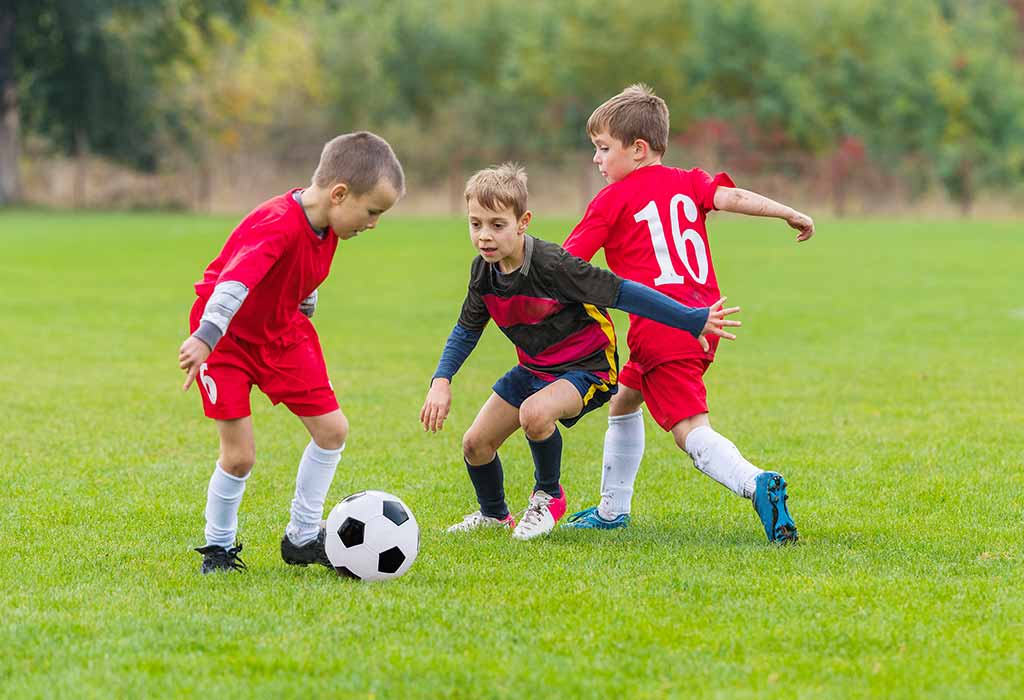
How Fitness Promotes a Positive Body Image in Kids
In a world bombarded by unrealistic beauty standards and media portrayals, fostering a positive body image in kids has become a crucial endeavor. One powerful tool that can contribute to this mission is fitness. Beyond its physical benefits, engaging in regular physical activity can significantly impact a child’s self-esteem, self-worth, and perception of their own body. In this blog, we’ll explore how fitness can be a catalyst for cultivating a positive body image in kids, setting the stage for a lifetime of self-confidence and self-love.
1. Empowerment Through Physical Accomplishments
Participating in fitness activities empowers kids to discover their own physical capabilities and strengths. Whether it’s completing a challenging yoga pose, improving their sprint time, or mastering a dance routine, each achievement reinforces a sense of accomplishment that goes beyond appearance. This empowerment helps children shift their focus from how their bodies look to what their bodies can achieve, fostering a healthier relationship with their own physicality.
2. Appreciating the Body’s Functionality
Regular exercise opens the door for kids to appreciate their bodies for what they can do, rather than how they look. Engaging in activities that require strength, agility, and endurance highlights the body’s functionality and potential. This shift in perspective encourages kids to view their bodies as instruments of action and vitality, ultimately diminishing the emphasis on external appearance.
3. Avenues for Self-Expression
Fitness provides kids with a creative outlet for self-expression. Dance, martial arts, yoga, and sports all allow children to express themselves physically, free from judgment. When kids find joy in moving their bodies in ways that feel authentic to them, they learn that their bodies are not just objects to be evaluated but vessels of expression and joy.
4. Building a Strong Mind-Body Connection
Engaging in fitness activities nurtures a strong mind-body connection. Children learn to listen to their bodies, respecting their limits, and responding to their needs. This connection helps them develop a deeper appreciation for their bodies’ signals and cues, reinforcing the idea that their bodies are partners to be respected and cared for.
5. Focus on Health and Wellness
Shifting the focus from appearance to overall health and wellness is a cornerstone of promoting positive body image. Encouraging kids to view fitness as a means to feel strong, energetic, and healthy, rather than solely for changing their appearance, fosters a more balanced and sustainable approach to self-care.
6. Sense of Inclusivity and Belonging
In fitness environments that emphasize inclusivity and teamwork, kids experience a sense of belonging that transcends physical appearance. Being part of a sports team or participating in group fitness classes allows children to appreciate the diversity of bodies and abilities, reinforcing the idea that all bodies are worthy and valuable.
7. Cultivating a Growth Mindset
Fitness encourages a growth mindset, emphasizing progress and effort over innate talent. Kids learn that improvement comes with practice and dedication, leading them to focus on their personal growth rather than comparing themselves to others. This mindset shift minimizes the harmful effects of comparison and envy, fostering a positive self-image.
8. Role Models and Inspiration
Introducing children to diverse role models in the fitness world can be inspiring and eye-opening. Seeing athletes, trainers, and fitness enthusiasts of all body types and backgrounds can challenge conventional beauty standards and show kids that strength and beauty come in many forms.
9. Parental Influence and Positive Modeling
Parents play a pivotal role in shaping a child’s body image. By engaging in fitness activities themselves and demonstrating a healthy attitude toward their own bodies, parents set a powerful example. Encouraging family activities like hikes, bike rides, or backyard sports not only promotes fitness but also creates positive family bonding experiences that emphasize the joy of movement.
10. Open Conversations and Education
Encouraging open conversations about body image, beauty ideals, and self-worth is crucial. Educate kids about the unrealistic portrayals of bodies in media and the importance of valuing their bodies for their uniqueness. Help them understand that everyone’s body is different, and that diversity is something to celebrate.
In conclusion, fitness is a dynamic avenue for promoting a positive body image in kids. By shifting the focus from appearance to function, strength, and overall well-being, children learn to appreciate their bodies for what they can do rather than how they look. As parents, educators, and caregivers, our role is to create an environment that nurtures a healthy relationship with the body, emphasizing self-love, acceptance, and the joy of movement. Through fitness, we can pave the way for children to embrace their bodies with confidence and celebrate the uniqueness that makes them truly remarkable.
Looking for some types of fitness options for your kids? Why not opt for football? Check out Unite Football Academy. They are all about kids developing their football skills in an enjoyable and non-competitive environment in Melbourne.
You May Also Like

Causes and Treatments of Colic in Infants
2022-06-09
2 Steps to Manage a Child’s Anger
2023-11-14

